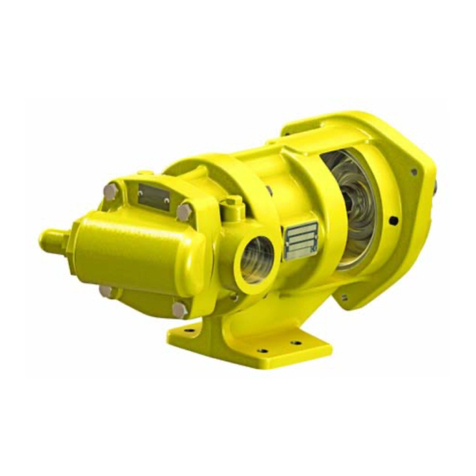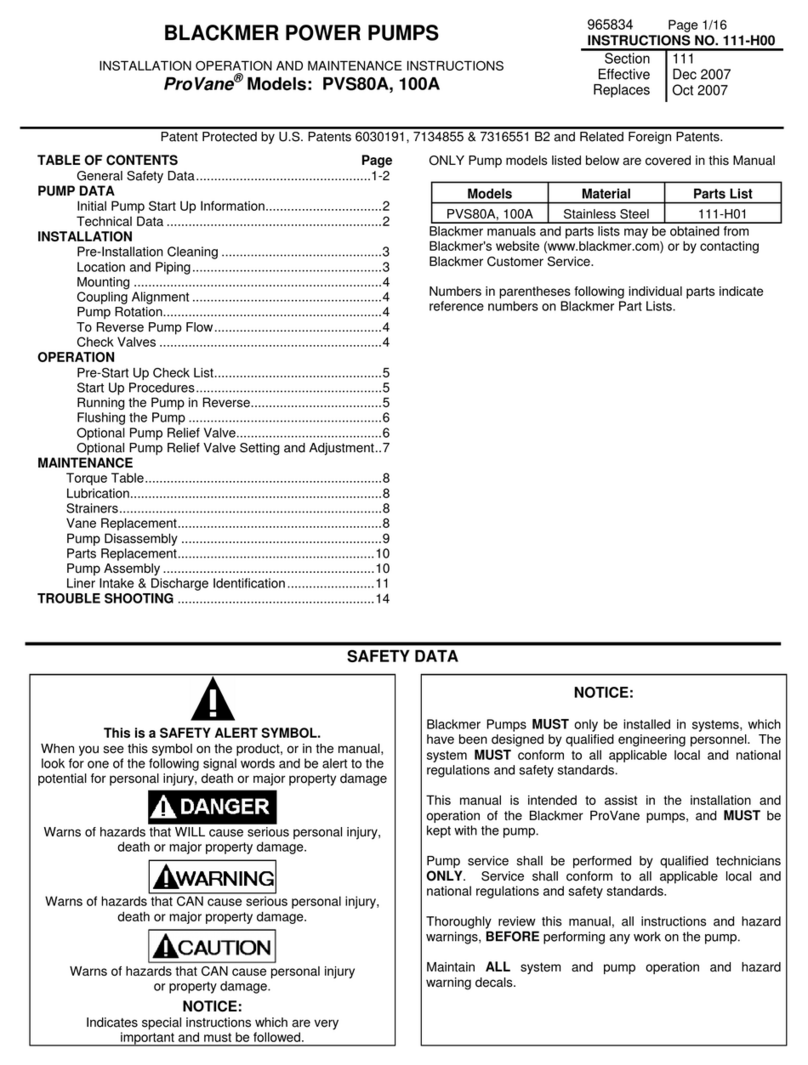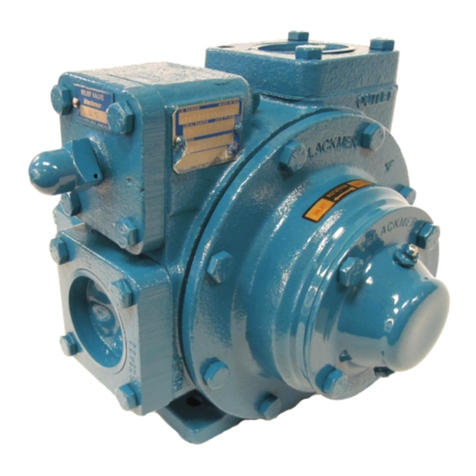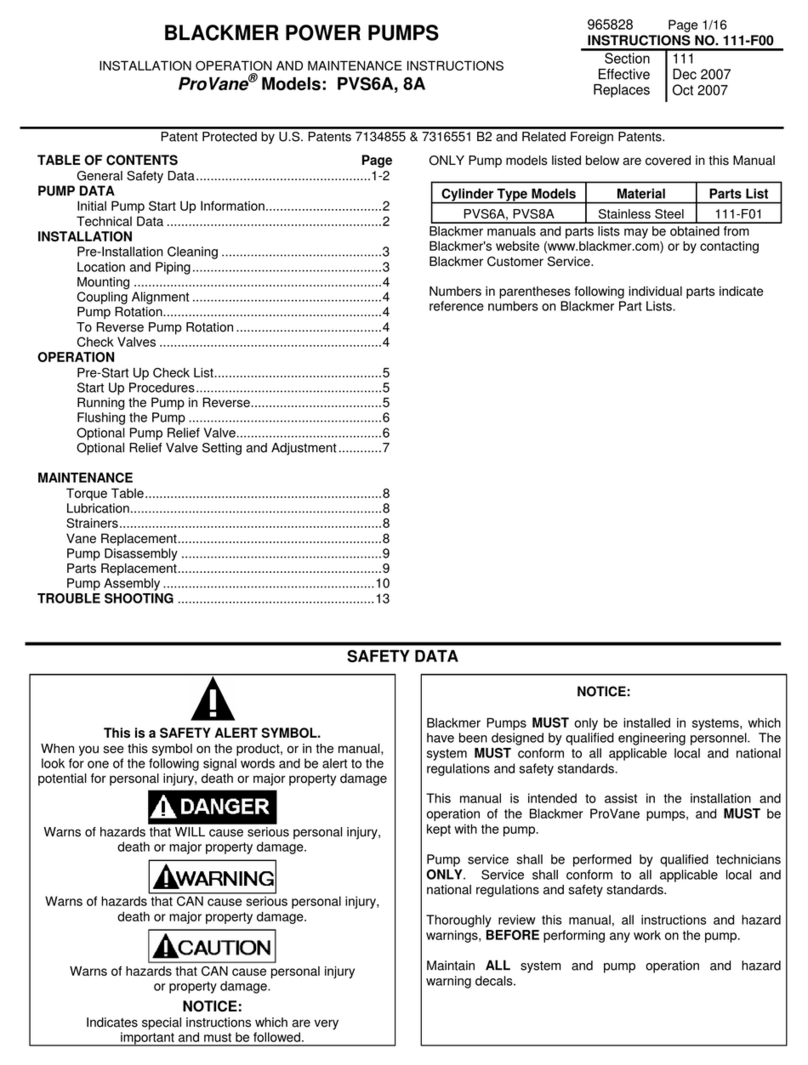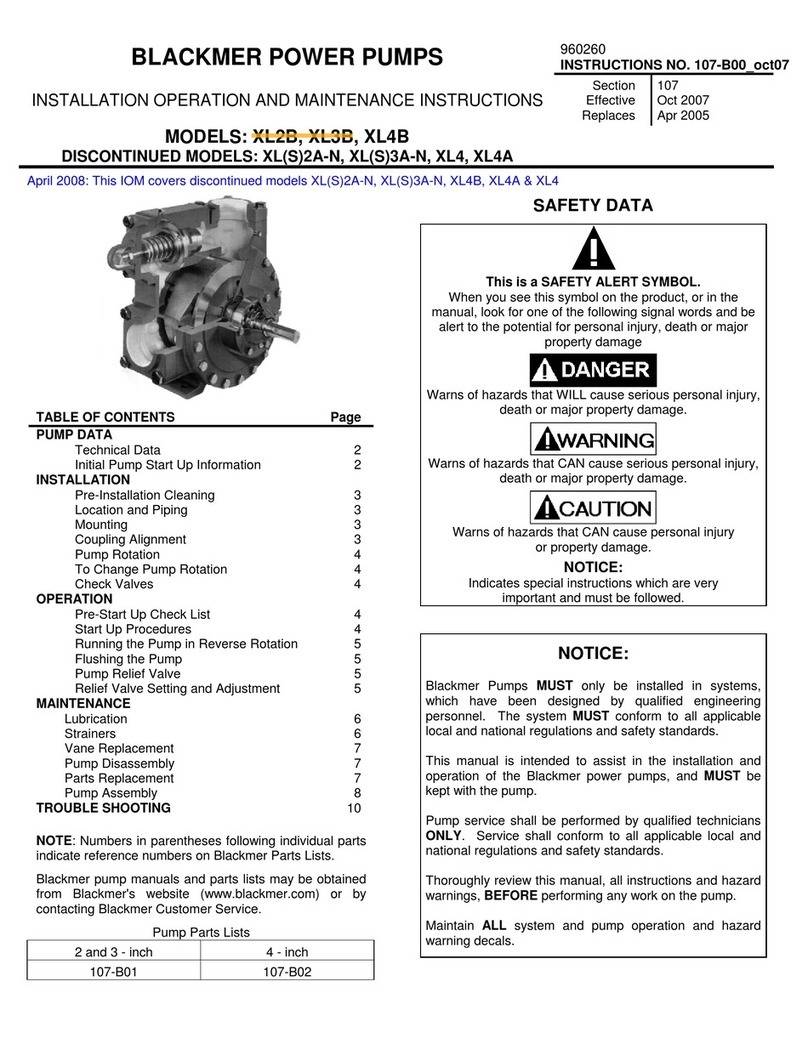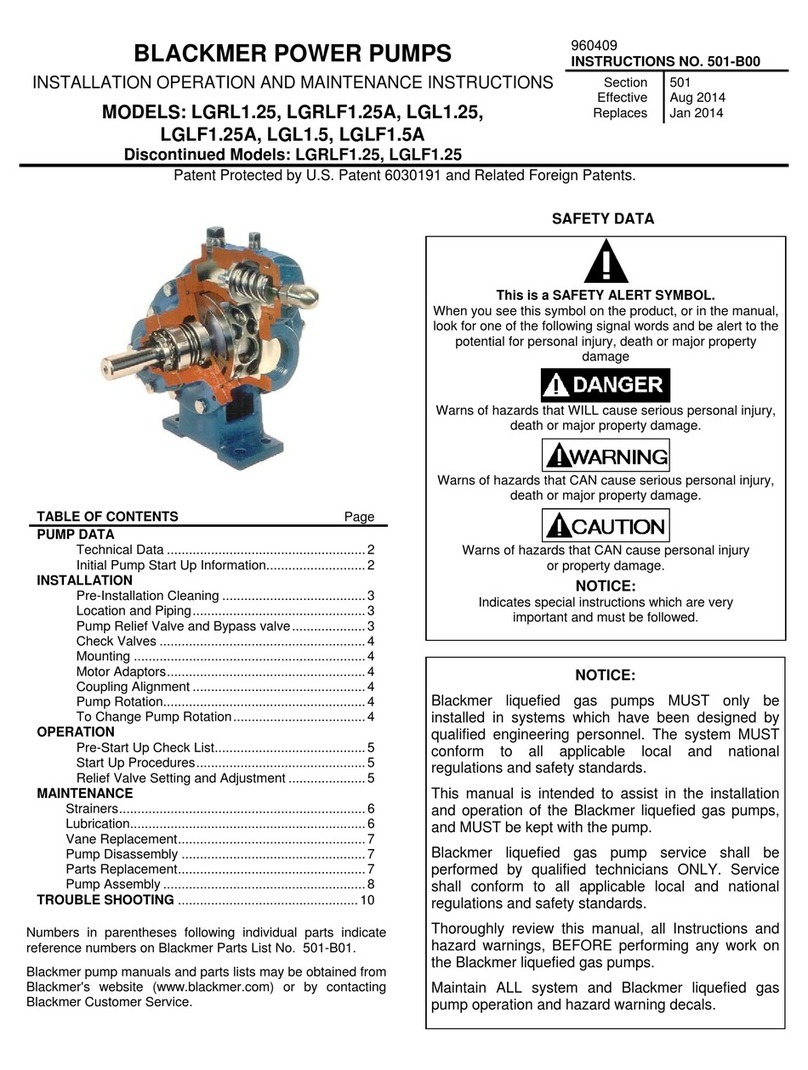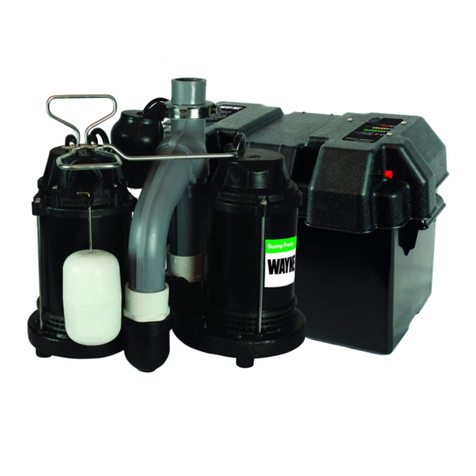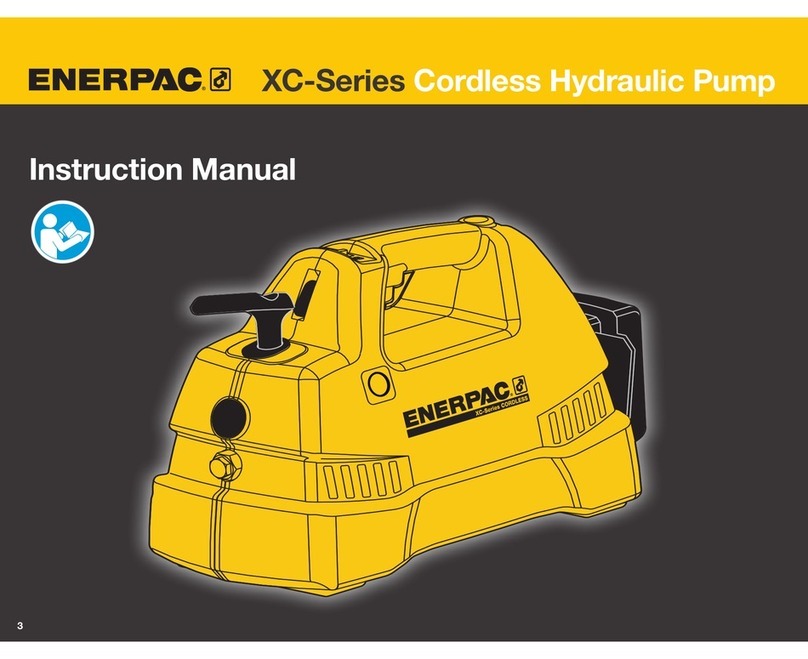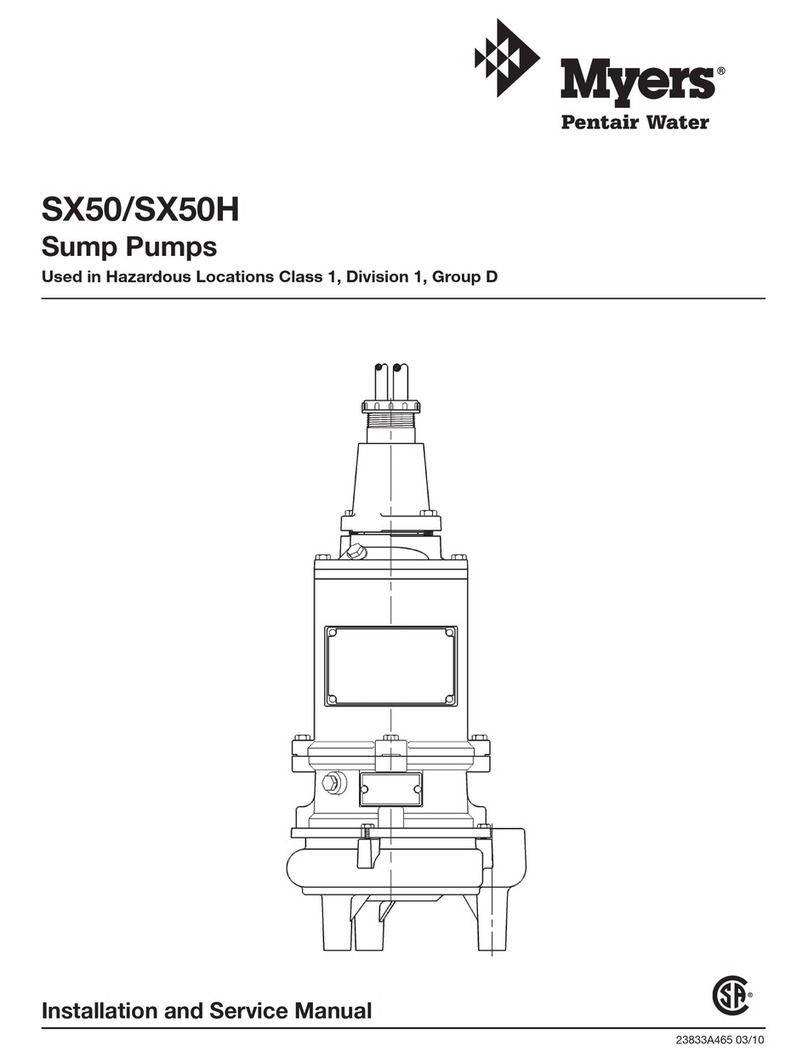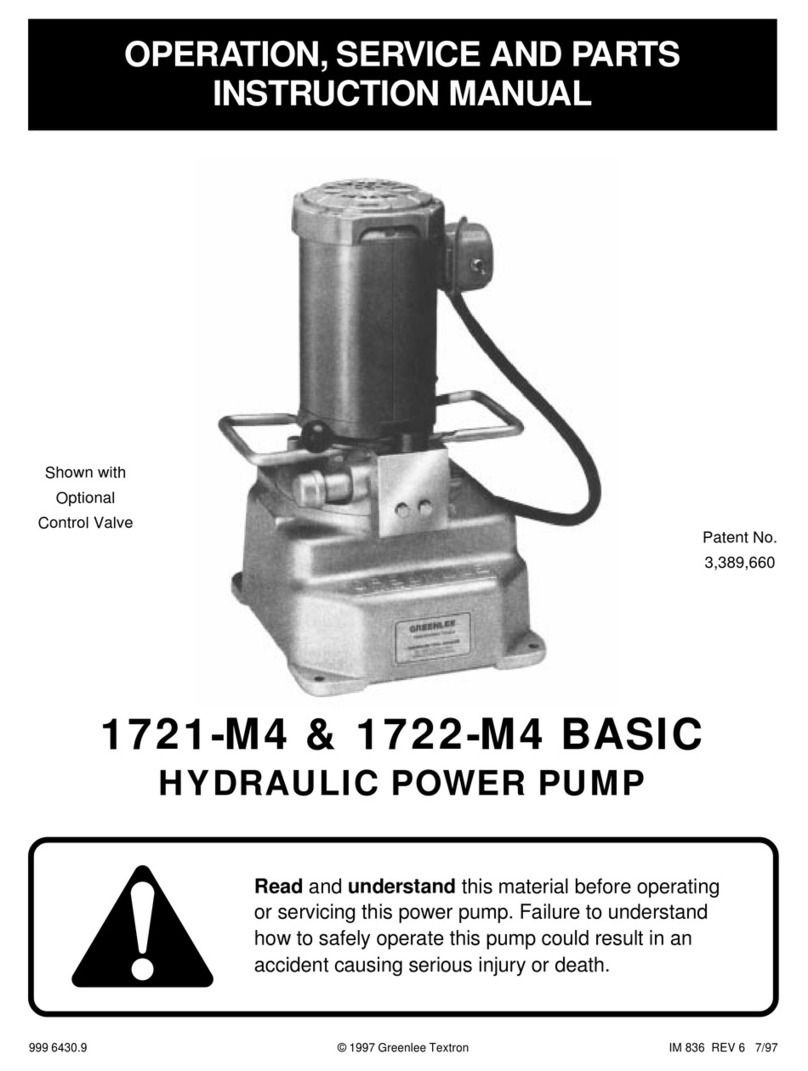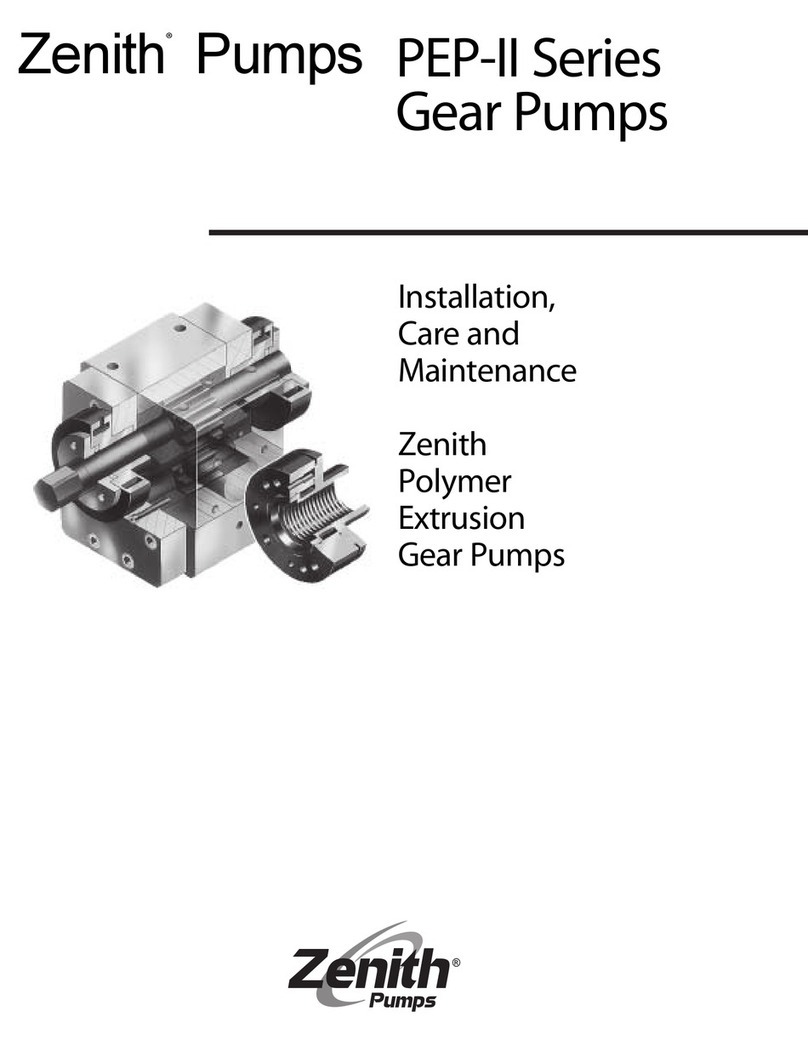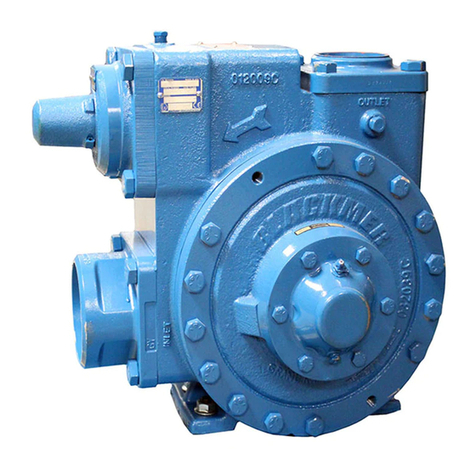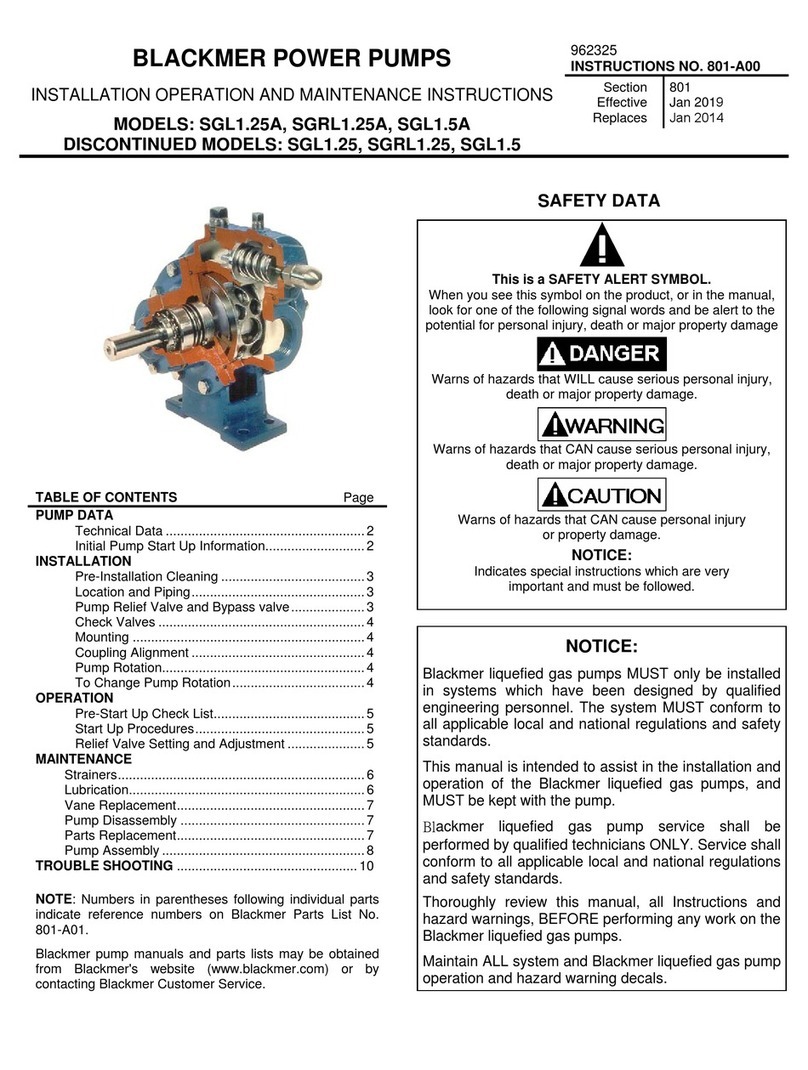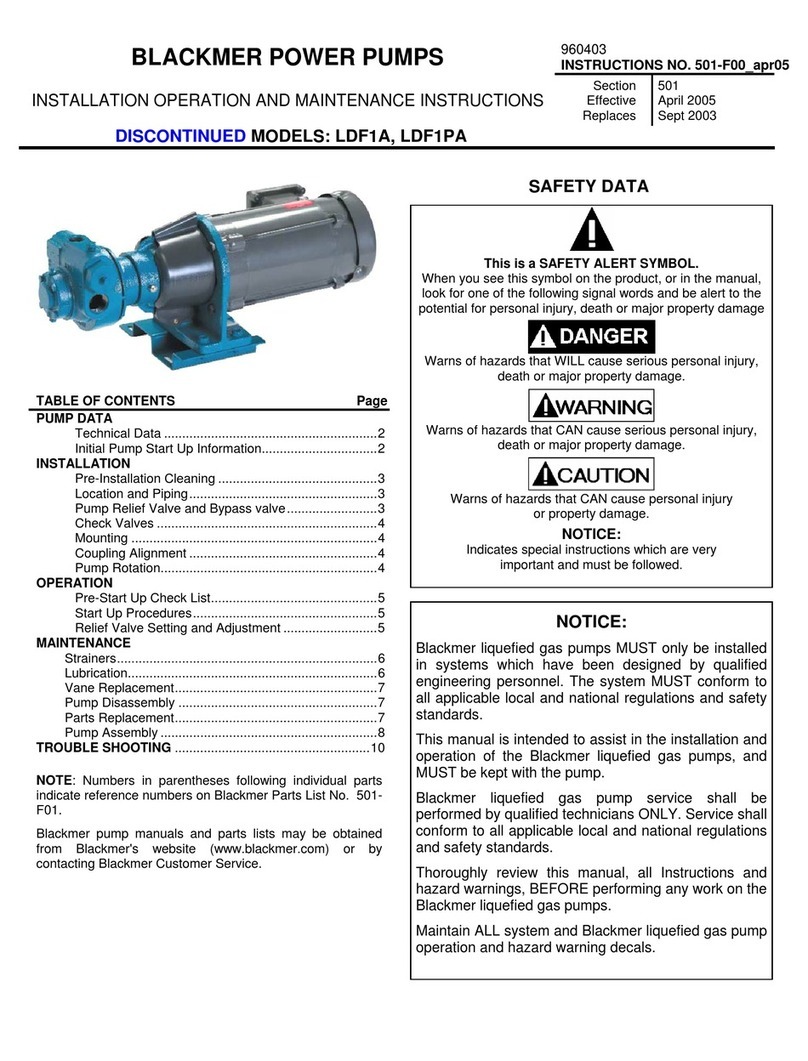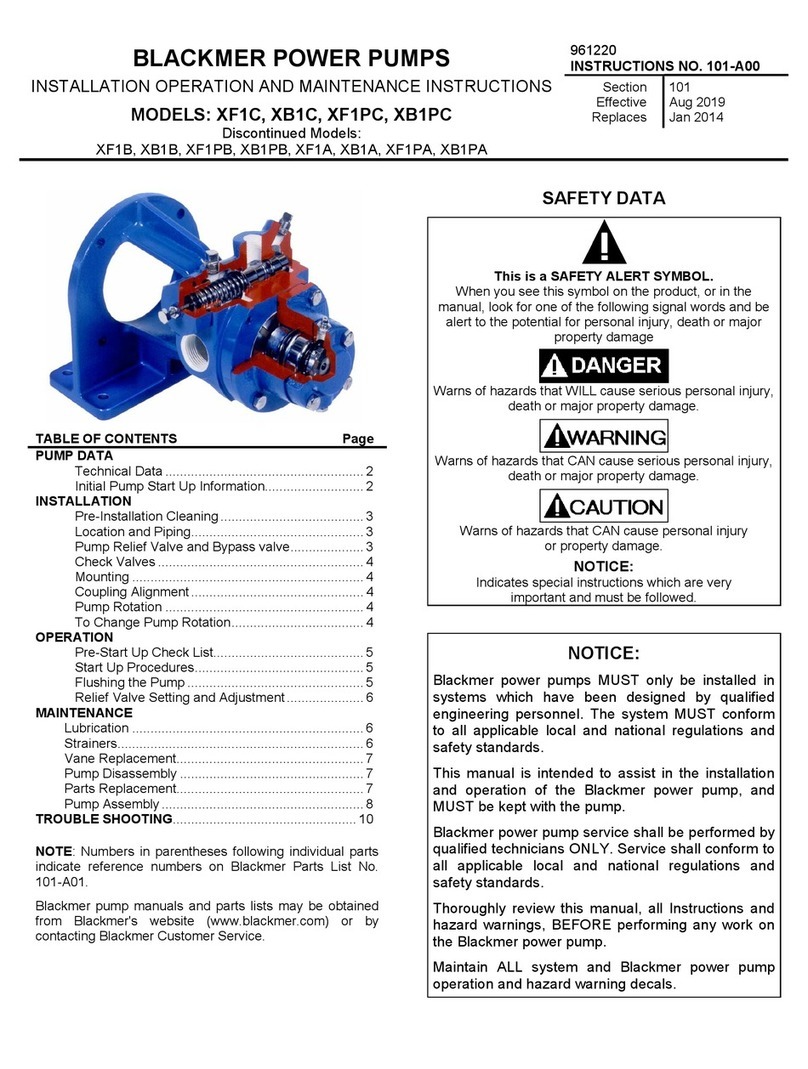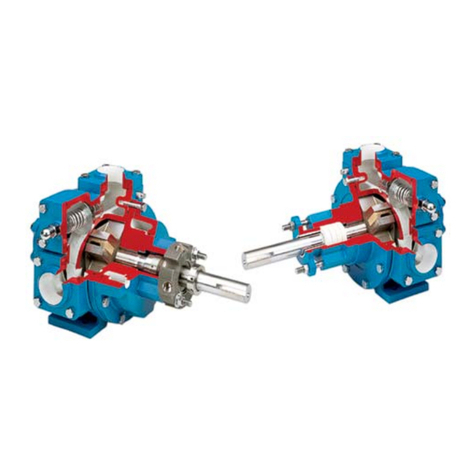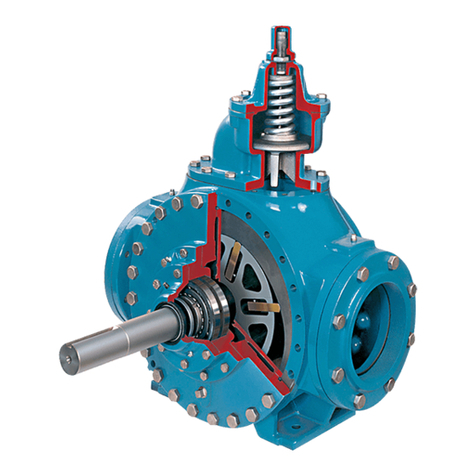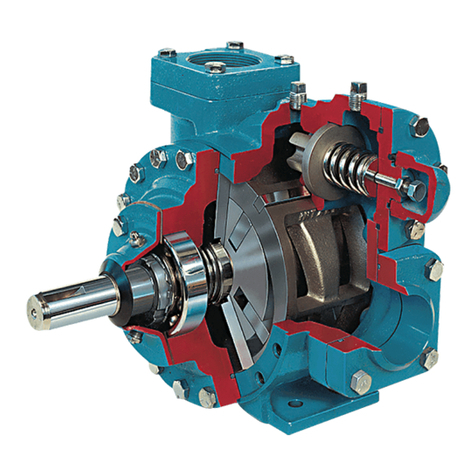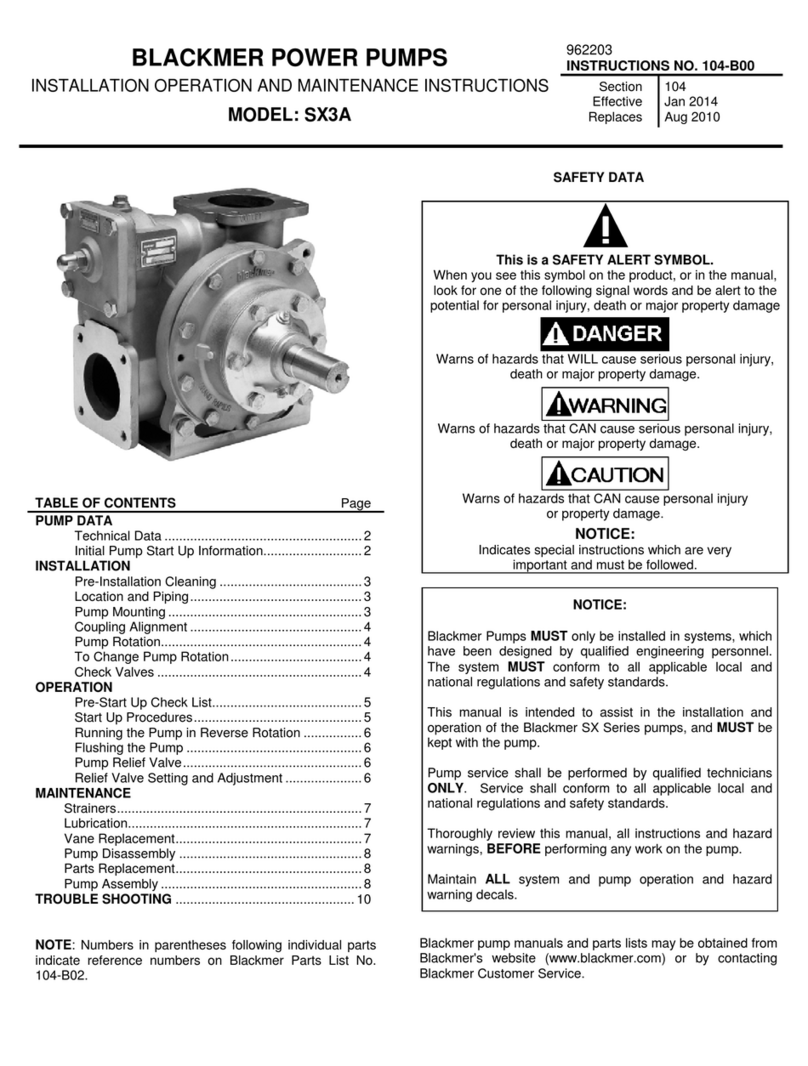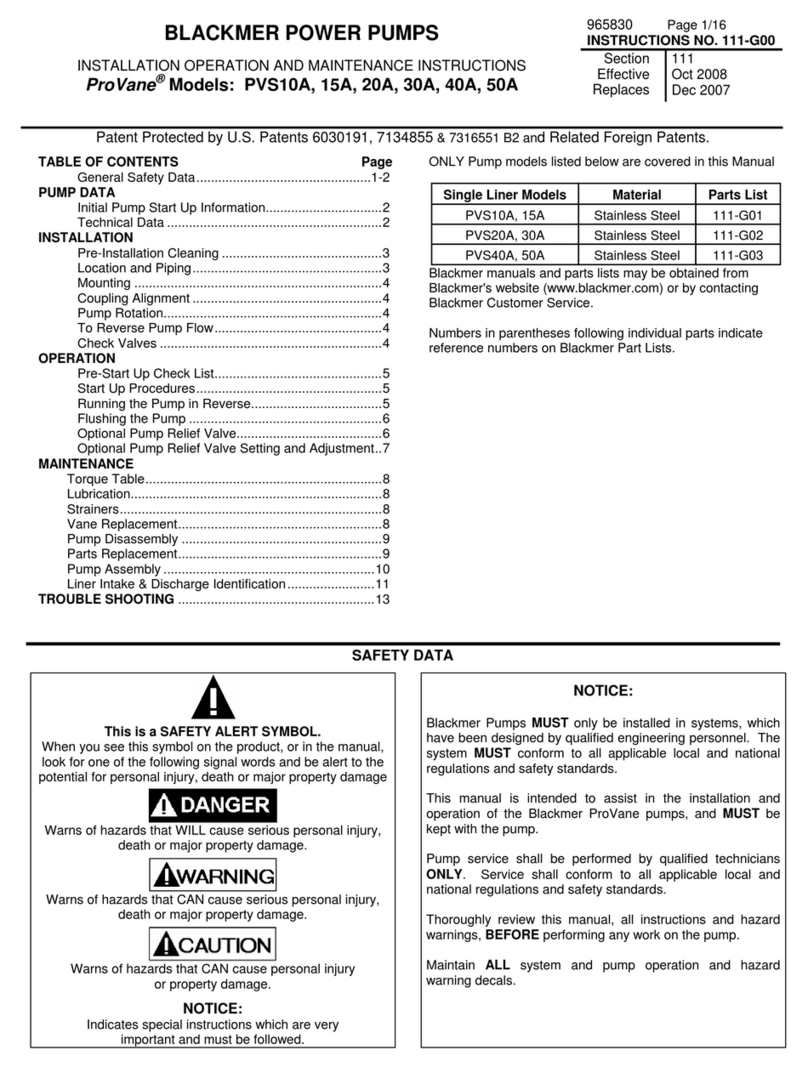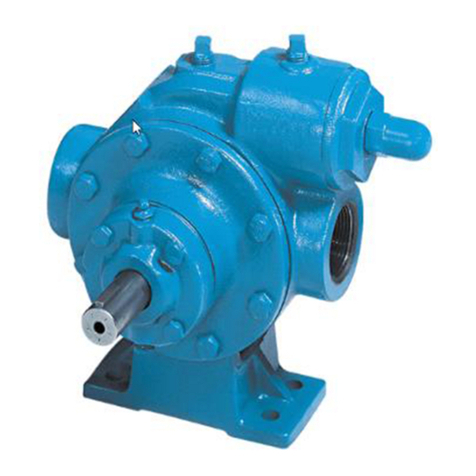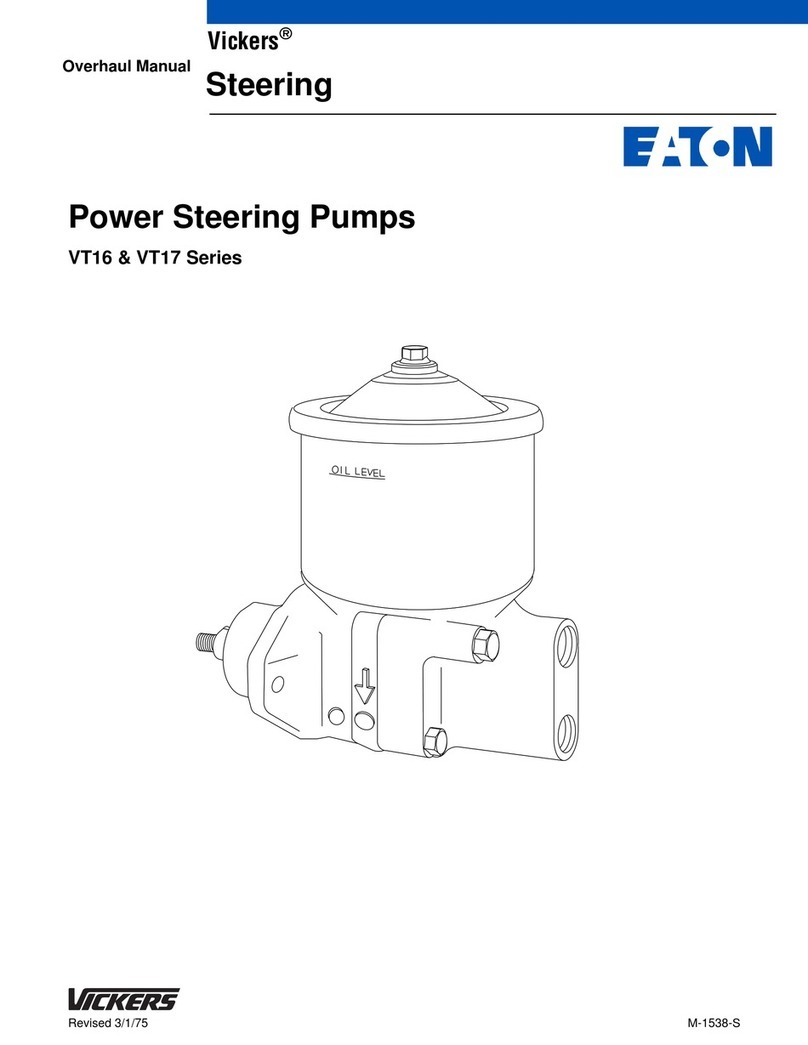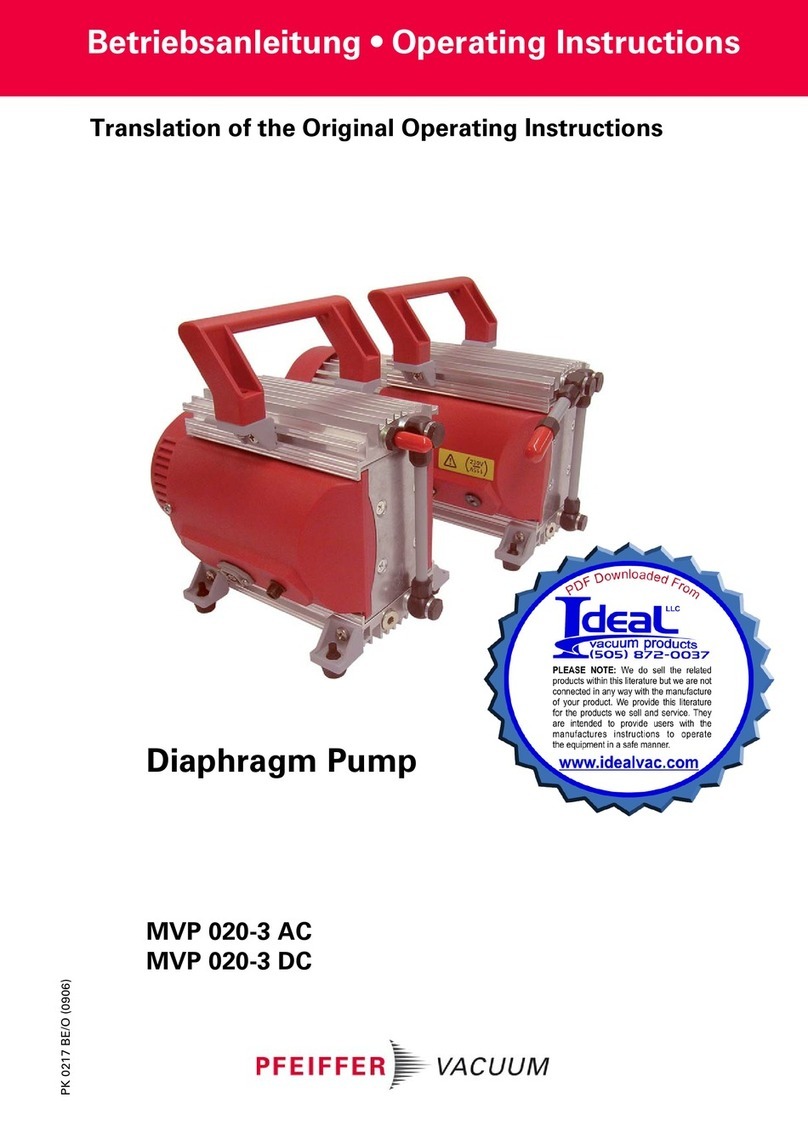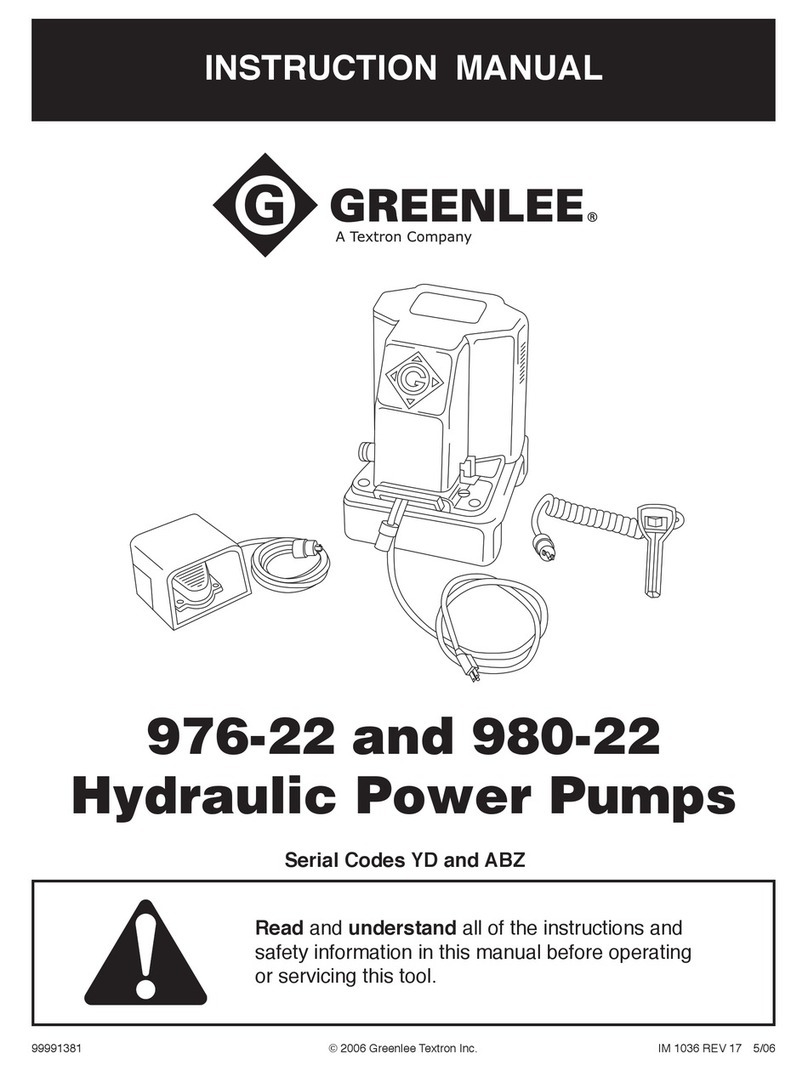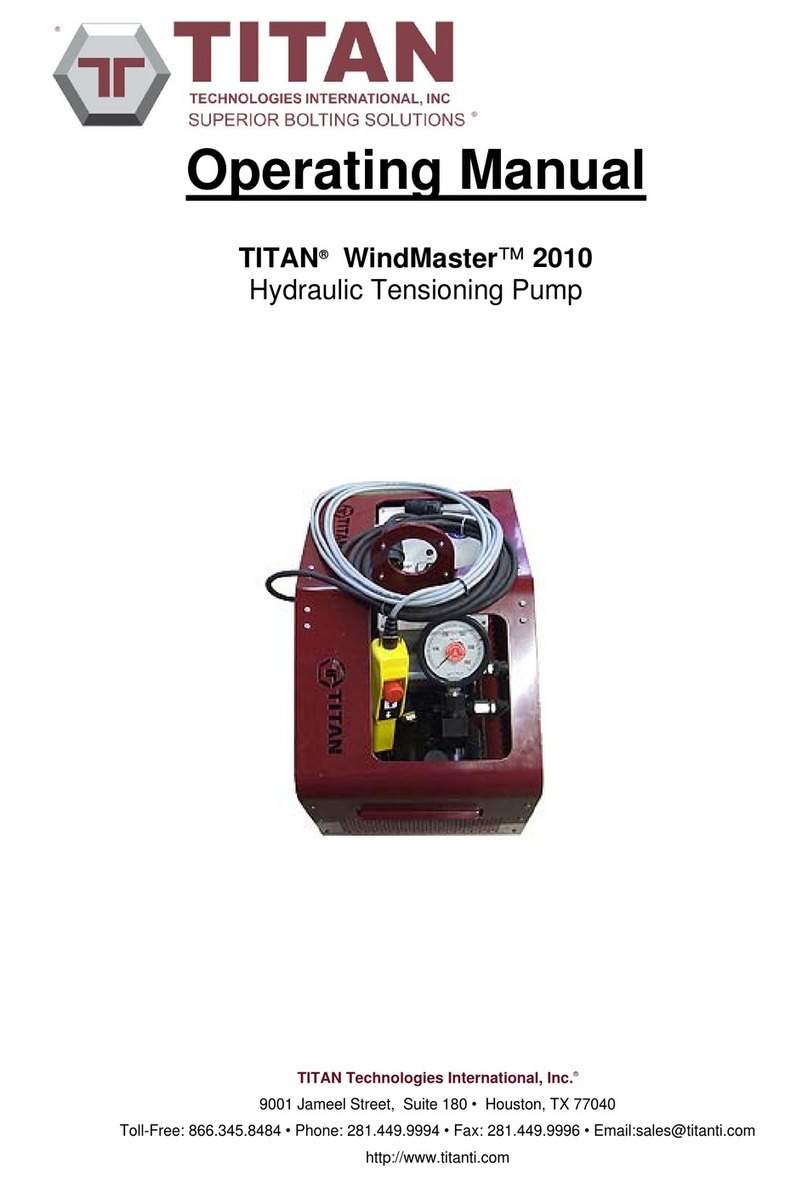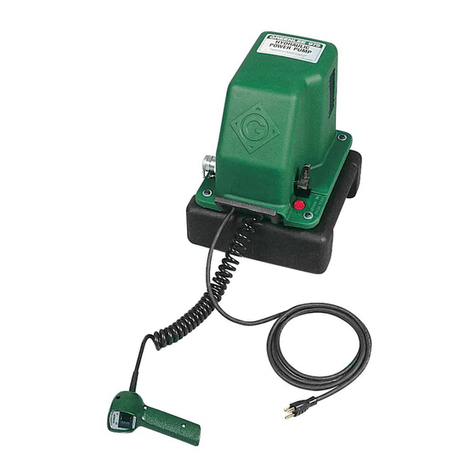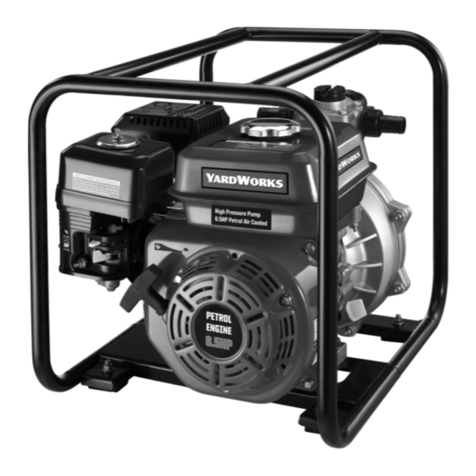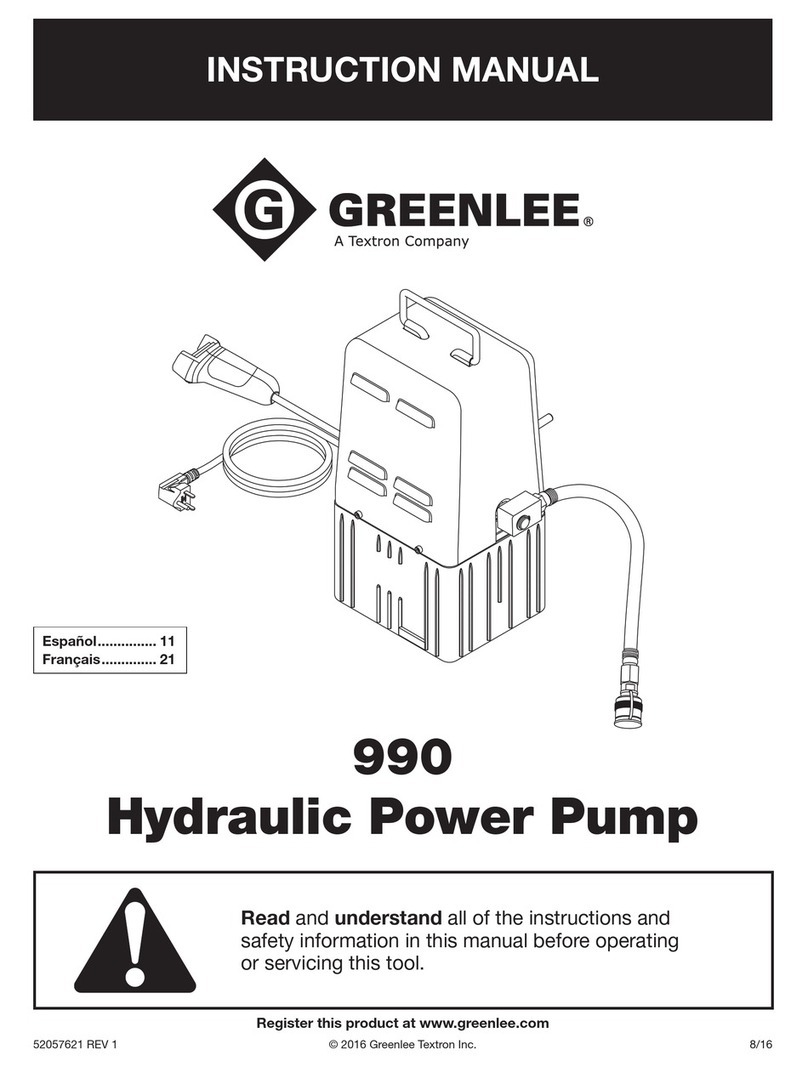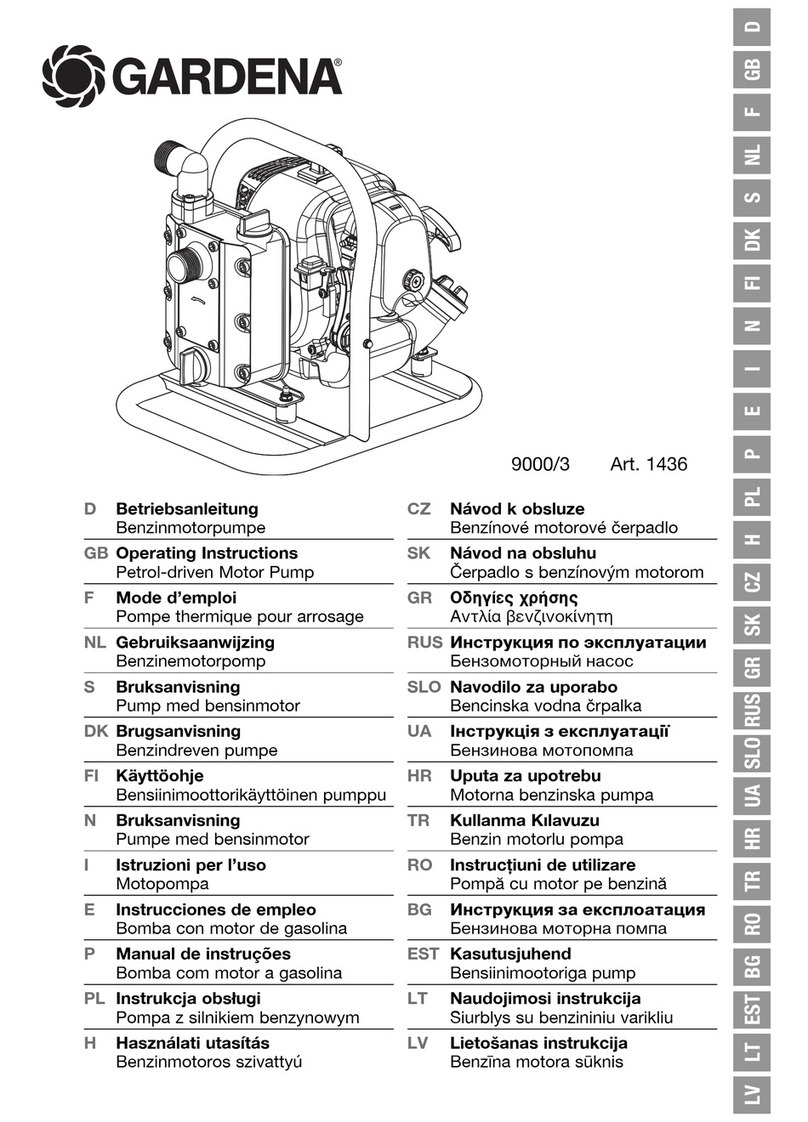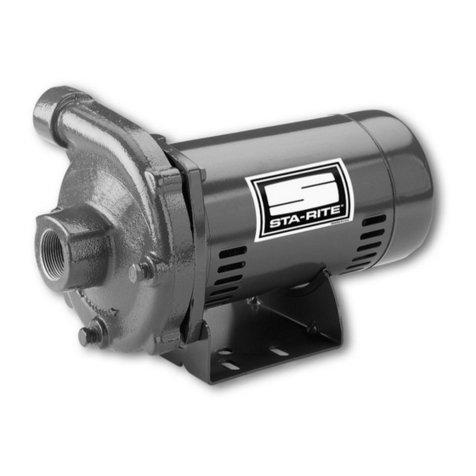
103-A00 page 9/12
MAINTENANCE
(1.5” and 2” models have only four vanes)
Figure 6 – Push Rod Installation
8. Remove the vanes and push rods from the rotor and
shaft assembly and inspect for wear or damage.
a. Insert the vanes (14) into the bottom rotor slots with
the rounded edges facing outward, and the relief
grooves facing in the direction of rotation. (Refer to
Figure 4.)
b. Hold the vanes in place while inserting the push rods
(77) from the top, as shown in Figure 6.
c. While holding the vanes in place, carefully slide the
non-driven end (shorter end) of the pump shaft into
the open end of the pump cylinder and into the
installed outboard head.
d. Install the remaining vanes into the top slots of the
rotor with the relief grooves facing in the direction of
rotation and the rounded edges outward.
9. Install the inboard head (20) as instructed previously in
steps 3 through 6.
10. PACKING AND PACKING FOLLOWER
When necessary to re-pack, use a full set of new
packing rings. Packing is furnished in sets with the
correct number of rings. Never add new rings to an old
set of packing.
a. Insert the pack washer (58) into the stuffing box of
the inboard head (20).
b. Insert each of the packing rings (19) separately into
the stuffing box, staggering the split joints 180
degrees, so that they are not overlapping or near the
joint of the preceding ring. Use the packing follower
to properly seat each ring after placement.
c. After all of the packing rings are in place, slide the
packing follower (75) against the packing. Install and
hand-tighten the stud nuts (18) evenly.
NOTE: Adjustment to the packing follower should be
made after the running the pump for 10 to 15 minutes
(see "Packing Adjustment").
11. PACKING ADJUSTMENT
It is important that the packing be properly adjusted to
prevent overheating.
Failure to stop the pump before
adjusting the shaft packing can cause
severe personal injury
Hazardous
machinery can
cause severe
personal injury.
a. While the liquid is being pumped, check for leakage
from the stuffing box. If necessary, STOP the pump
and uniformly tighten the packing follower stud nuts
(18) 1/4 turn at a time to reduce leakage.
b. Restart the pump and check the stuffing box
temperature several minutes after each adjustment
for signs of overheating.
c. Repeat steps a and b until leakage is controlled, and
no excess heat develops.
d. Check the packing again after 20 to 30 minutes of
running the pump, and readjust, if necessary.
NOTE: Some leakage is desirable to lubricate the packing,
but in some cases it is unacceptable, depending on the
application. A commercial mechanical seal should be used
for applications requiring minimal shaft leakage.
12. OPTIONAL LIP SEAL ASSEMBLY
a. Insert the wave spring (152D) into the stuffing box of
the inboard head.
b. Lightly grease the inboard shaft to facilitate lip seal
installation. With the lip seal spring facing the pump,
slide the lip seal assembly (152) into the stuffing box,
against the wave spring.
c. Install the seal follower (75) against the lip seal
assembly. Install and tighten the follower capscrews
(16).
NOTE: When installed properly, lip seals should require
no adjustment.
13. COMMERCIAL MECHANICAL SEAL
On pumps equipped with a commercial mechanical seal,
refer to the separate literature accompanying the
mechanical seal for installation instructions.
14. RELIEF VALVE ASSEMBLY
a. Insert the valve (9) into the relief valve body (6) with
the fluted end inward.
b. Install the relief valve spring (8) and spring guide (7)
(and valve collar (9A) on the NP2.5) against the valve.
c. Attach a new relief valve gasket (10) and the valve
cover (4) on the relief valve body (6).
d. Screw the relief valve adjusting screw (2) into the valve
cover until it makes contact with the spring guide (7).
e. Install the relief valve cap (1) and gasket (88) after the
relief valve has been precisely adjusted.
NOTICE:
The relief valve setting MUST be tested and adjusted
more precisely before putting the pump into service.
Refer to "Relief Valve Setting and Adjustment"
15. Reinstall coupling, shaft key, and coupling guards.
Operation without guards in place can
cause serious personal injury, major
property damage, or death.
Do not operate
without guard in
place.
15. Refer to “Pre-Start Up Check List” and “Start Up
Procedures” sections of this manual prior to pump
operation.

